“Who is Tara?” — the miraculous, mystical and marvelous view. Book excerpt from “A Belief in the Miraculous” — Jason Espada
Many Buddhists in “modern” times tend to rationalize the “sacred” and the “miraculous” as metaphors and skillful means. While this may seem very reasonable, safe and rational, there is room for faith, belief and “magic” in our practice. It may enhance, purify and perfect our practice, rather than diminish it. One champion of the “miraculous, mystical and marvelous” in Buddhism is book author Jason Espada.
From title to concept to content, Jason Espada’s book A Belief in the Miraculous – Buddhism, Magic, and a Sense of the Sacred is a must read for any devotional Buddhist, regardless of tradition. The prolific author challenges us to go beyond method and philosophy, and to embrace the “miraculous” and the “sacred.”
In his book, A Belief in the Miraculous — one of our Buddha Weekly “must reads” [Found here on Amazon>>] — he wrote of the benefits of the sacred view:
“…Our lives can change just like that… The world can become luminous again, larger by an untold measure, as new possibilities dawn.”
With Jason’s kind permission, we are excerpting a chapter on Tara — a must read for the many devotees of Mother Tara. [Don’t miss some of Jason Espada’s beautiful Tara praises and poems. He has very generously published on an open Google Drive link>>]
An Introduction to the Bodhisattva-Divinity Tara
From A Belief in the Miraculous – Buddhism, Magic, and a Sense of the Sacred
by Jason Espada

In order for us as Westerners to engage in practices that have come from the Tibetan Buddhist Tradition, without misunderstanding their nature or purpose, there are a few ideas that need to be spelled out. As Americans, we have certain common ideas, and so the same questions naturally arise, and these can be addressed at any point, but probably the earlier on in our study the better.
I would like to introduce Tara as an example of a practice that can be beneficial, and, when I think of doing this, I can see right away the kinds of questions I would propose we consider so the communication can have a better chance of success.
First, as with any divine being – or bodhisattva, we have the question, ‘Who is Tara?’ Of course we can see that there are different ways to answer this kind of a question. There are different levels to it. When we speak about the ultimate nature of anything, be it God, or Buddha, then this is a really deep question, maybe taking a lifetime to ask or to answer. If we are asking this type of deep question, this holds up a mirror to our own self. We can ask, ‘Who am I?’, and ‘Who do I conceive myself to be?’
Then again, especially if we are beginners, we really need more of an answer in terms of what we can all easily recognize and understand and work with. Maybe this approach will be helpful: using the simplest, least esoteric language to describe something that is both accessible and also profound.
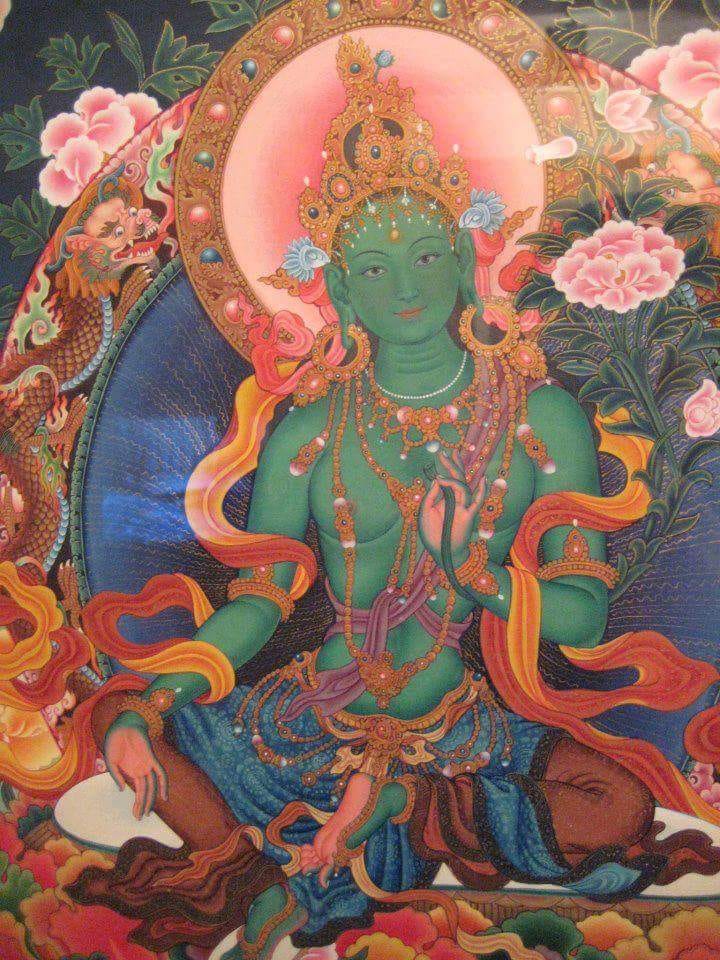
Historically, and now in Western culture too, Tara is regarded as a protectress, a savior, a benefactor. The practice of calling on Tara in times of need has been successful for many people. She is called on to help liberate us from problems, and especially from fears. She has a reputation for quick action, for responding very quickly, with loving kindness and compassion.
Her practice can be done in different ways – with prayer, or through visualization and mantra recitation. Tara’s mantra is Om Tare Tuttare Ture Soha (pronounced Om Tah-ray Too-tah-ray Too-ray So-ha). A person can also simply think of her and feel her presence with faith and devotion.
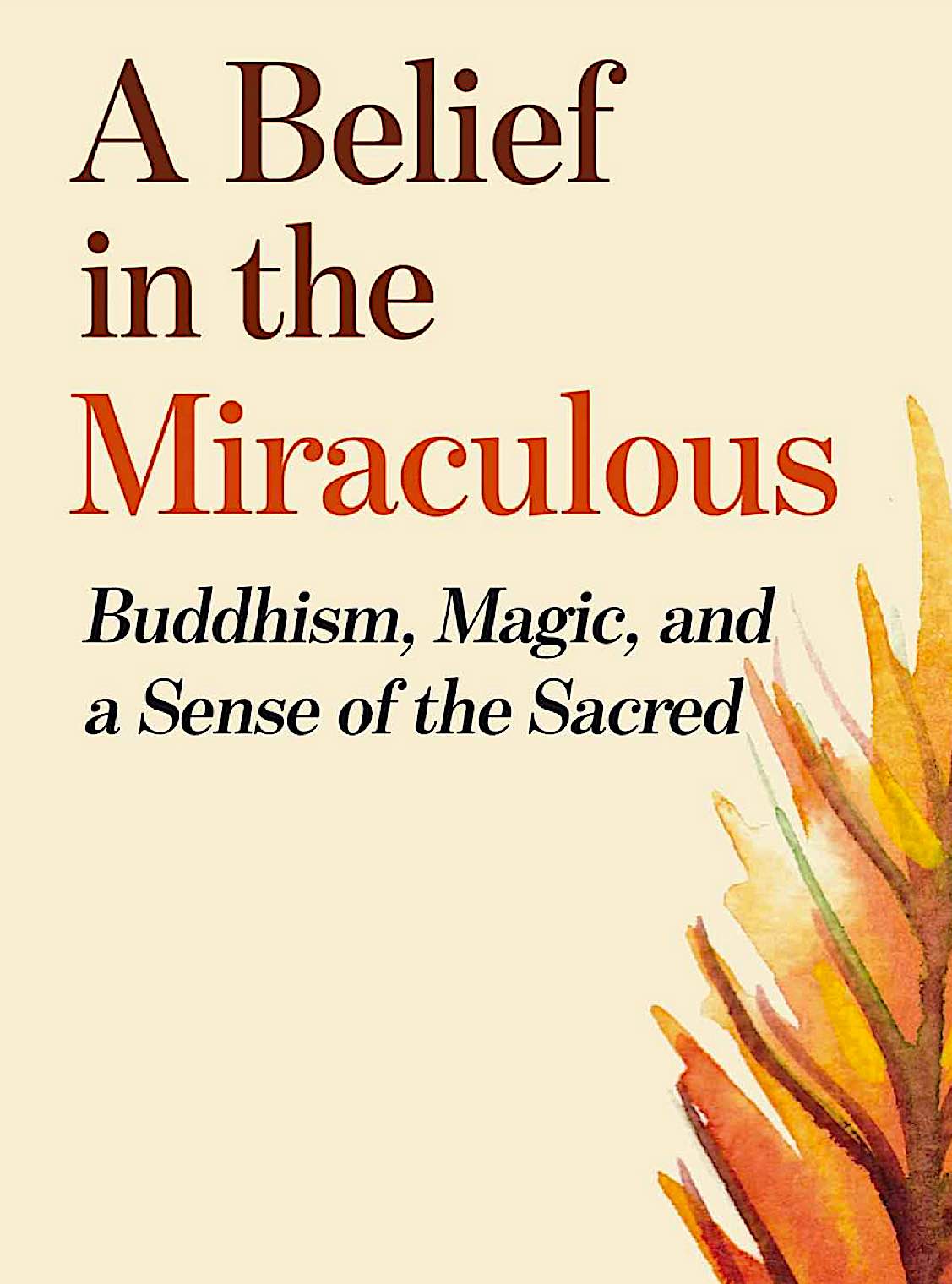
Meditators will tell us that we all have Tara within us; that all these qualities and wonders are contained within our fundamental nature. They tell us that if we do the practice these qualities awaken and are expressed in the world, and that in a sense we become Tara, and this I don’t doubt. For the time being though, let’s just stay with the outer, common belief and function, that calling on Tara works, that increasing what we can call the Tara energy in our lives works, even if we don’t know all of why or how it does. If we have some karmic affinity, and some receptivity or openness, and we give these methods a fair try, we can see the result for ourselves.
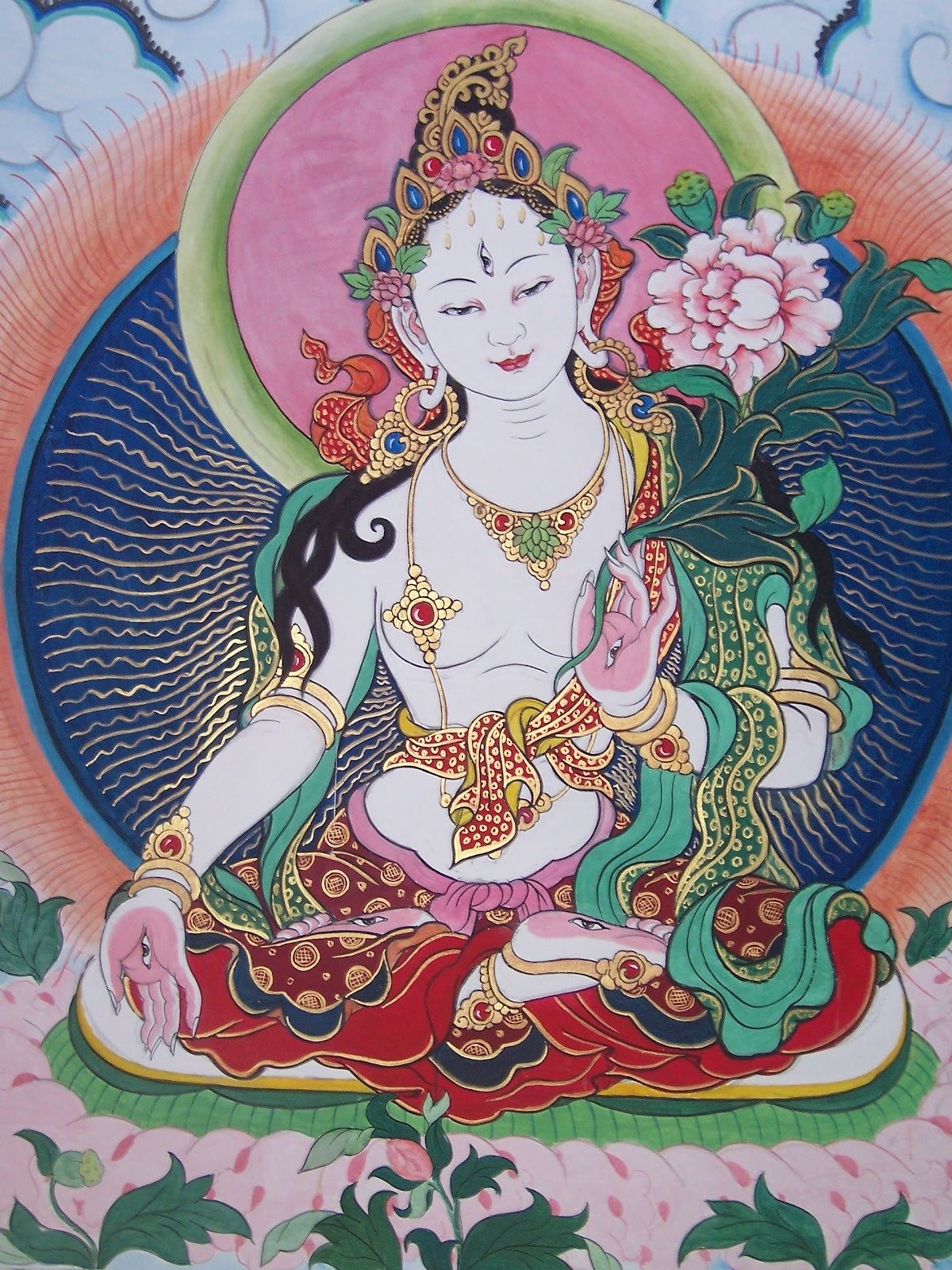
‘If I could only give you the moon…’

Another question that often comes up when talking about any of the bodhisattva-deity practices, calling on Tara for example, and praying for a husband or a wife, or for health, or wealth is, ‘How is this Buddhist?’, and I think I’m just now able to say what I’ve been thinking and feeling for a while now that Tara is of a certain class I call ‘the Bodhisattva Sangha’. The word bodhisattva means someone who is dedicated to helping others in the fullest possible ways, and sangha means a spiritual community.
As a member of the Bodhisattva Sangha, Tara responds as we would, with kindness, to someone asking for something… If they ask for water, we give them water; if they ask for a coat, we give them a coat…
There’s a Zen story about a monk who was told that a thief was coming, and so he threw his bowl and his robes out the window as the thief approached. The thief scooped them up, somewhat startled, I’d imagine, and the monk called after him, saying, ‘If I could only give you the moon!…’
Such is the wish of Bodhisattva Sangha – their deep wish is for our true happiness, our freedom, peace and health, and so if we ask for food or shelter or medicine, they give us these without holding anything back, as a mother or father would give to their child, or a friend to a friend. They give out of their great means. They will give to us according to our needs, and they will give to us as much as we can receive. Their wish for us includes both the relative, provisional, day to day needs, and also those things that are of ultimate benefit, such as teachings and encouragement, and good conditions for spiritual growth. Their love and their kind wish for us is of one nature.
I heard someone give the definition of blessing, in the Buddhist sense, as that which removes obstacles to spiritual practice, which I think is a good definition because it includes both relative and ultimate things.
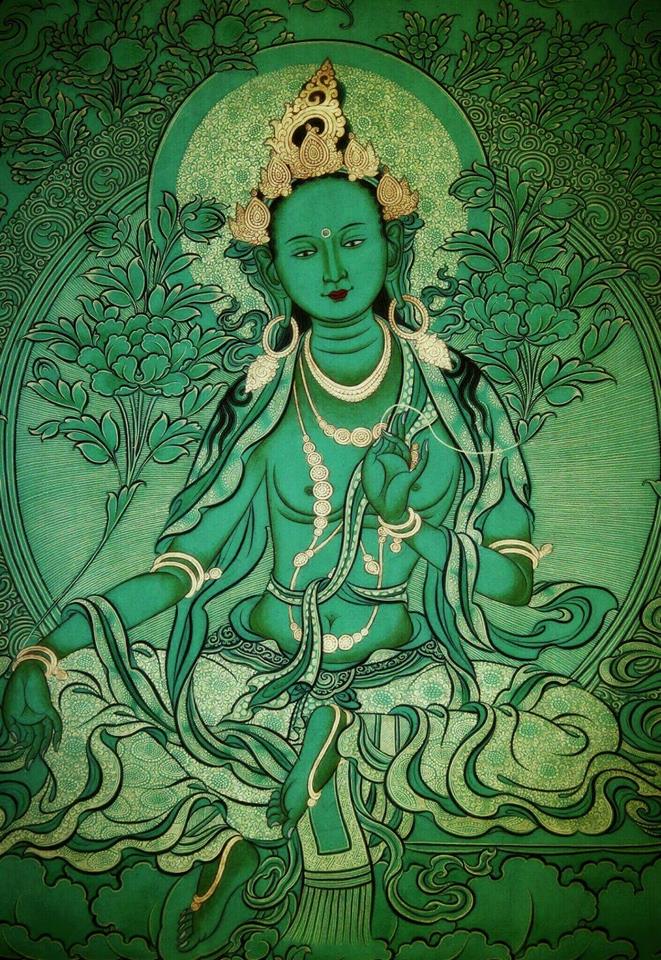
Making a distinction – the word ‘deity’
If I had to choose one term that isn’t translated well from Eastern culture to Western culture, it is the word ‘deity’. More often than not, translators are not communicating the intended meaning. The reason is this: whether or not we identify with the Western religious traditions, as Westerners we have ideas about God as part of our culture. We have all these associations, automatically, for the word God and its synonyms that, in this case does not apply. When trying to understand what words are referring to that come from non-theistic cultures, some effort is needed to get at a clear sense of their meaning.
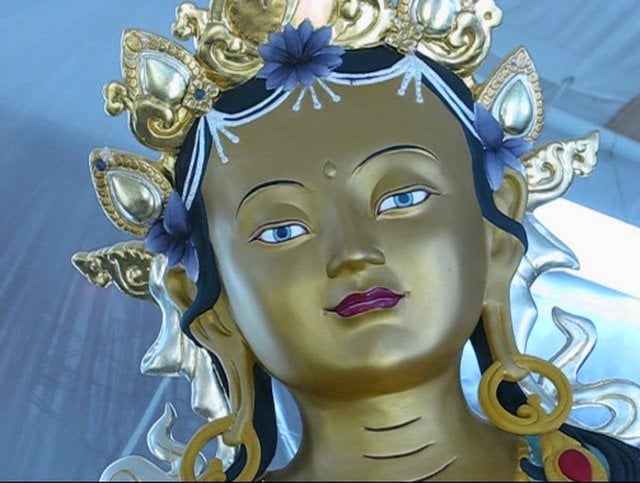
We can say for certain that Buddhism does not make use of the idea of a creator God, all powerful, and all knowing. It does however have teachings, and it does make use of practices that call upon and access what can be called ‘help from the other side’. There is calling upon beings that help.
When Tibetan teachers speak in English, sometimes they don’t translate the word ‘yi-dam’, and they explain it as keeping the bodhisattva – divinity ‘held tightly in the mind’, as a method of meditation, as a path, and as a means of benefit.
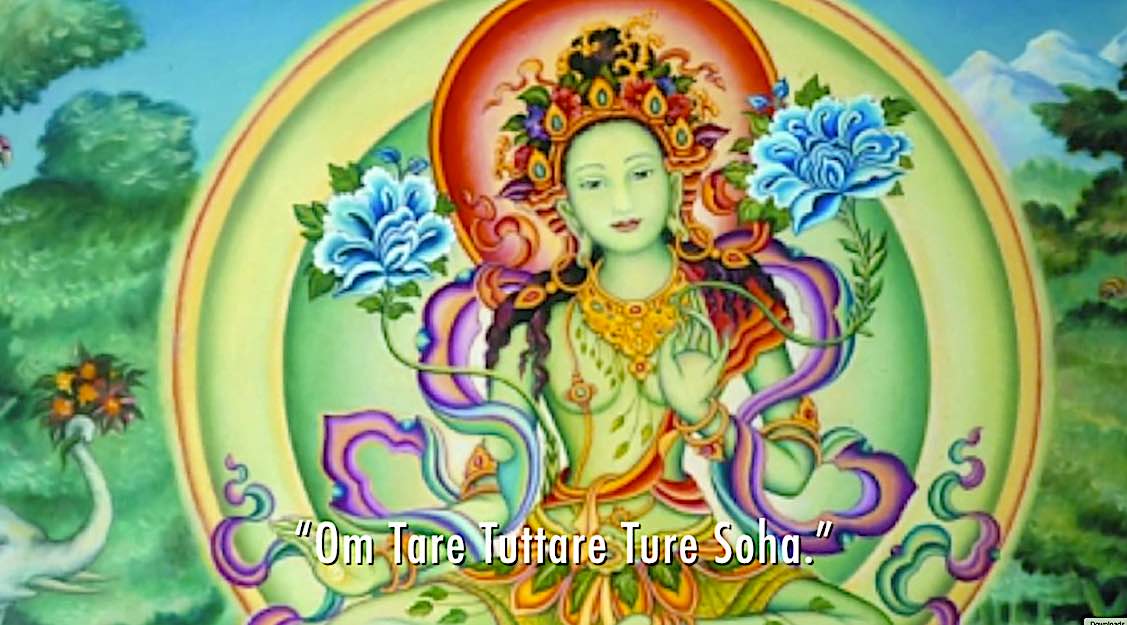
A first level bodhisattva, in some teachings, is described as having at least the experience of insight into the cause of the end of suffering, that freedom and joy. And Buddhist teachings on what is called refuge tell us that if someone or some being is still subject to suffering or change, then that is not a reliable source of protection in the long term. We should seek true refuge, true and lasting protection and support. This, in Buddhist teachings, is what distinguishes Buddhas, or enlightened beings as true refuge.
Perhaps, rather than use the word ‘deity’, sticky, or perhaps misleading as it is, I would propose the term ‘divinity’ – since we do have the idea that the sacred can be here in this world; that it is here for us, available, and to be received with deep respect. The sense of divinity can be cultivated and awakened throughout our lives.
One more thought: regarding a question such as ‘Where is Tara?’We usually divide the world up in our thinking in ways it is not actually divided. We say there is an inside and an outside to our life. Looked at energetically though, the so-called inside and outside are one.
If we think of Tara as an archetype, an aspect of the universal soul we all share, this can have connotations of being purely something inside. My sense is that it’s truer to say that Tara, and the other Buddhas, Saints, or Bodhisattva Sangha exist in the realm of one-ness, where the inside and outside are both included, where they are one. I think this accounts, at least in part, for the effectiveness of these methods.
In Praise of Tara
Jason has also published many beautiful praises and poems honoring Mother Tara, not to be missed. Here are some of the links. In the spirit of sharing and giving, he has published these openly for all.
- In Praise of Tara poem, with audio recitation track by Jason Espada>>
- Listen to Jason Espada recite his poem In Praise of Tara>>
- Nine beautiful Tara Poems as downloadable files on Google Drive>>
- Jason Espada’s well known “A Buddhist Library” where he shares precious Dharma teachings>>
- Jason Espada’s web home page>>
Beautiful chanting of Tara’s Mantra by Ani Choying Drolma
More articles by this author
Search
Latest Features
Please support the "Spread the Dharma" mission as one of our heroic Dharma Supporting Members, or with a one-time donation.
Please Help Support the “Spread the Dharma” Mission!

Be a part of the noble mission as a supporting member or a patron, or a volunteer contributor of content.
The power of Dharma to help sentient beings, in part, lies in ensuring access to Buddha’s precious Dharma — the mission of Buddha Weekly. We can’t do it without you!
A non-profit association since 2007, Buddha Weekly published many feature articles, videos, and, podcasts. Please consider supporting the mission to preserve and “Spread the Dharma." Your support as either a patron or a supporting member helps defray the high costs of producing quality Dharma content. Thank you! Learn more here, or become one of our super karma heroes on Patreon.
Jason Espada
Author | Buddha Weekly
Jason Espada is a writer and classical musician living in San Francisco; a steward of his father’s photography, and the founder of A Buddhist Library: http://www.abuddhistlibrary.com. Over the years, he’s made a number of recordings of Buddhist teachings. These days his focus is on the natural connection between spirituality and social action. His new website is at JasonEspada.com.


















